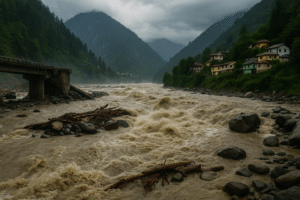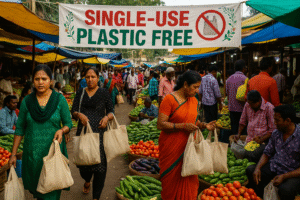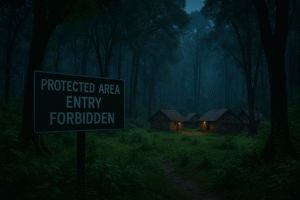Conclusion: “Ethical Pathways: Concluding Our Environmental Journey”
Reflecting on Our Journey
As we conclude our series, it’s important to look back and reflect on the journey we’ve taken through the complex world of environmental ethics. We’ve navigated the deep waters of sustainability, stewardship, and the intrinsic value of nature, uncovering how these principles are vital in guiding our actions toward a healthier planet.
- Learning and Understanding: Our exploration began with understanding the core concepts of sustainability and stewardship, recognizing the importance of preserving resources for future generations and caring for the Earth. We delved into the intricate balance of ecosystems and the role of biodiversity, seeing firsthand how all life forms are interconnected.

- Facing Challenges: We’ve confronted the stark realities of environmental justice, acknowledging the disparities in how environmental benefits and burdens are distributed. The journey through the Rights of Nature introduced us to a groundbreaking perspective that champions the legal and moral standing of natural entities.
- Ethical Consumption and Production: Our discussions around ethical consumption and production highlighted the power of our choices and the impact they have on the global environment and economy. We recognized the need for mindful consumer behavior and responsible manufacturing practices.
- Climate Considerations: The series also brought to light the pressing issues of climate ethics, urging us to consider our responsibilities and the need for equitable solutions in the face of climate change.
Reflecting on our journey reveals the depth and breadth of environmental ethics, showcasing the urgent need for thoughtful and concerted action to preserve our planet’s integrity.
The Interconnectedness of Environmental Ethics
Environmental ethics is a web that connects various concepts, showing how our actions impact the planet and its inhabitants. This interconnectedness highlights the importance of considering multiple perspectives when making decisions that affect the environment.
- Holistic Viewpoint: Understanding the interconnectedness of environmental ethics means recognizing that issues like pollution, loss of biodiversity, and climate change are all related. Actions in one area can have significant effects in others, emphasizing the need for a holistic approach to environmental protection and sustainability.

- Shared Responsibility: This interconnectedness underscores the fact that everyone—individuals, communities, businesses, and governments—has a role in protecting the environment. It’s not just about local actions but also how these actions fit into the global picture.
- Mutual Impact: Just as our actions affect the environment, the state of the environment affects us. Healthy ecosystems provide us with clean air, water, and resources, while degraded environments can lead to health problems and economic losses.
- Cross-disciplinary Solutions: The interconnected nature of environmental ethics calls for solutions that span multiple disciplines and sectors. Collaboration between science, policy, economics, and culture is needed to address the complex challenges facing our planet.
- Ethical Decision-Making: Recognizing the interconnectedness in environmental ethics guides us toward making decisions that are not only good for the environment but also fair and beneficial for all members of society.
Understanding the interconnectedness of environmental ethics helps us appreciate the complexity of the environmental challenges we face and the need for integrated, equitable, and sustainable solutions.
Looking Forward
As we wrap up our exploration of environmental ethics, we look ahead to the future, considering how we can apply what we’ve learned to continue making a difference in our world.
- Continuous Learning: The journey of understanding and practicing environmental ethics doesn’t stop here. We must keep learning about the latest research, policies, and practices that can help us live more sustainably and ethically.

- Individual and Collective Action: Each of us has a role to play. From the choices we make as consumers to the ways we engage with our communities and advocate for change, our actions contribute to a larger movement toward a sustainable future.
- Innovation and Solutions: The challenges we face require innovative solutions. By supporting and participating in sustainable technologies and practices, we can find new ways to protect and preserve our environment.
- Global Collaboration: Addressing environmental issues requires global cooperation. By working together across borders, cultures, and disciplines, we can tackle the complex problems of climate change, biodiversity loss, and environmental degradation.
- Empowering Future Generations: Educating and empowering the next generation is crucial. By teaching young people about environmental ethics and involving them in conservation efforts, we can ensure a lasting legacy of stewardship and respect for the planet.
Looking forward, we are tasked with the responsibility to act upon our knowledge, engage with our communities, and strive for a balance that honors both human needs and the health of our planet. The journey of environmental ethics is ongoing, and each step we take is a step towards a more ethical, sustainable, and just world.
Author’s Note
Thank you for joining us on this enlightening exploration of environmental ethics. We hope this journey has inspired you to think deeply about your role in the natural world and motivated you to take action toward a more sustainable and equitable future. Let’s continue to learn, reflect, and act in ways that honor our planet and each other.
G.C., Ecosociosphere contributor.
References and Further Reading
- “A Sand County Almanac” by Aldo Leopold – A classic in environmental literature, offering a foundation for understanding the land ethic and the importance of a conservation-focused mindset.
- “The Overstory” by Richard Powers – A novel that intertwines the lives of its characters with the life of trees, offering profound insights into environmental interconnectedness and ethics.
- “Braiding Sweetgrass” by Robin Wall Kimmerer – Blends indigenous wisdom with scientific knowledge, presenting a unique perspective on nature, ecology, and ethics.





Comments
Can you be more specific about the content of your article? After reading it, I still have some doubts. Hope you can help me.
Can you be more specific about the content of your article? After reading it, I still have some doubts. Hope you can help me.
Thank you for your sharing. I am worried that I lack creative ideas. It is your article that makes me full of hope. Thank you. But, I have a question, can you help me?